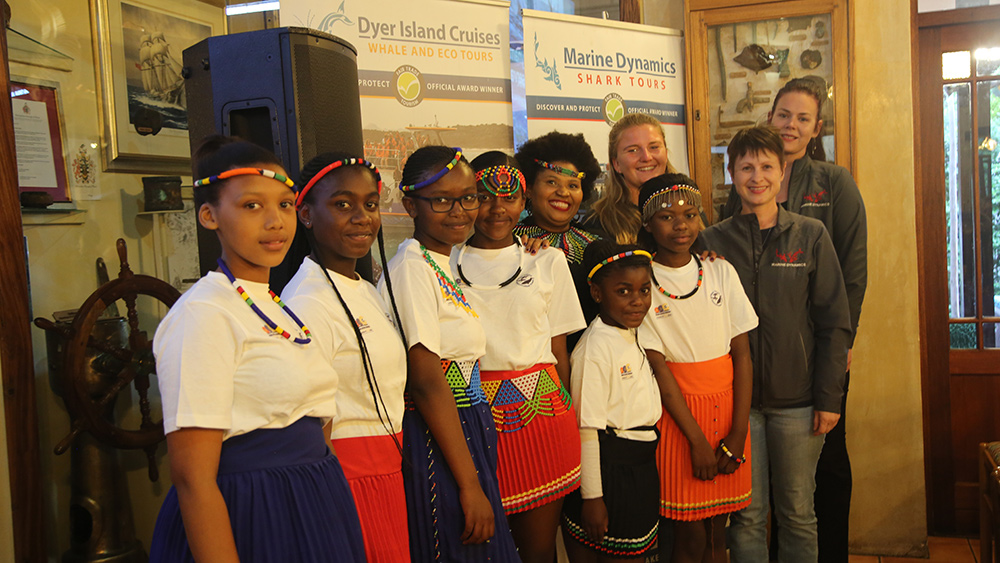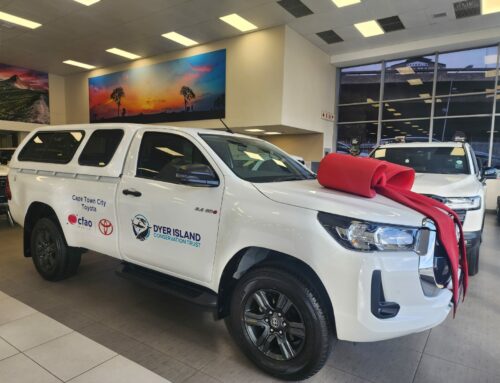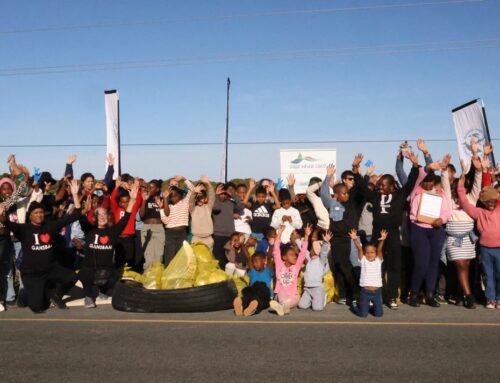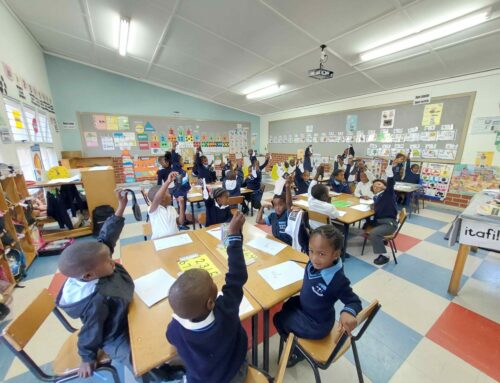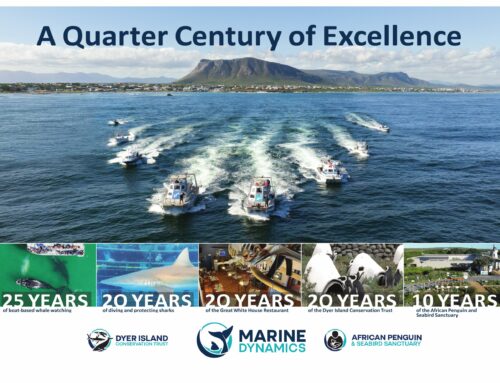Clean Marine
October’s marine evening was a colourful mixture of different topics and speakers.
Brenda du Toit, of the Dyer Island Conservation Trust, provided insight about how marine debris occurs and its consequences such as entanglement or death of marine life found in the area. Brenda emphasised that it is up to everyone to make a difference. In the course of this, she also presented various projects the Dyer Island Conservation Trust established to minimise ocean-bound marine pollution and thus prevent harm to marine animals. This included: beach cleanups done over the past two decades; the fishing line bin project; Project Storm; and the production of newspaper bags. Collecting waste statistics was flagged as a priority to influence change.
Project Storm addresses the waste getting flushed into the ocean through stormwater drainage by installing catchment nets. The first two were placed at Gansbaai harbour in a collaboration between the team of Marine Dynamics/Dyer Island Conservation Trust and the Overstrand Municipality. An analysis of the 74.35 kg of trash collected between June to October shows that cigarette ends accounted for the highest recorded item after just eight ‘catches’ – a shocking 15 795. Plastic bags contributed the most to the weight. These shocking numbers highlight that waste carelessly discarded does not disappear but has real consequences for our marine ecosystem. The fishing line bin project has been growing steadily along the South Africa coastline and the GPS positions of these can now be viewed on the recently revamped Dyer Island Conservation trust website. It is planned that all storm drain nets will also be mapped.
The audience was delighted by the DEEP Blue Ambassadors students from the Dyer Island Conservation Trust’s environmental education programme, who recited critical information about marine pollution. This is part of their learning experience helping them improve on their public speaking skills.
Liberty Denman (UK) presented on the Marine Dynamics Academy scientific internship and the research she is working on during her stay – a Baited Remote Underwater Video (BRUV) study to assess the diversity and abundance of fish and shark species around Dyer Island and how these influence each other.
Marketing and Sales Manager, Cari Roets, showcased how Marine Dynamics and Dyer Island Cruises represent Gansbaai and South Africa at international travel shows, spreading the word about sustainable shark and marine tourism and conservation efforts, whilst showcasing Gansbaai as a tourist destination.
Any queries related to fishing line bins and storm nets can be directed to [email protected]
– Lucca Irrgang, Marine Dynamics
